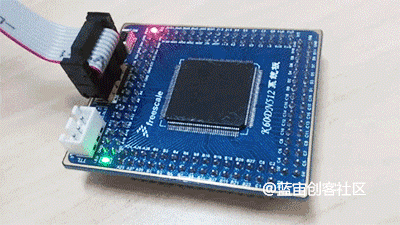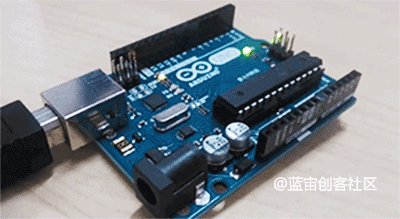I am Zhou Baibai, a student majoring in Electronic Information Engineering, and I have just joined the Blue Zhou team. Apart from these identities, I am just a fervent enthusiast of maker culture. However, this enthusiasm used to exist only at the level of observation.
I understand the principles of this project, and I can implement the functions of that project, but all these things remain in my mind!

The gap between me and the real maker geniuses is called “hands-on”! So, starting from this article, I will stick to updating and sharing my various insights and small projects that I start working on.
Many people who are just getting into DIY maker content are first attracted by the works of some geniuses, then have the impulse to try it themselves, but find it very difficult to get started, especially when faced with various development boards and not knowing how to choose. Today, Zhou Baibai will set up a comparison between two classic boards—K60 and Arduino UNO.

1. Basic Parameter Comparison


Here, I will summarize their functional characteristics a bit! (Please don’t laugh at me, experts). From the above parameters, it can be seen that K60 has as many as 144 pins, while Arduino UNO only has more than 30. In comparison, K60 can achieve more functions.
Moreover, it can be seen that K60 has a very high crystal oscillator frequency (50MHz), while Arduino has a crystal oscillator frequency of (16MHz). How should this be understood? The crystal oscillator can be compared to the human brain; the higher the crystal oscillator frequency, the faster the brain operates, meaning the board runs faster (and there are many other differences that I won’t introduce one by one for now).
From a technical parameter perspective, K60 wins, but this cannot be the only criterion for selecting a board for your projects.
2. Target Audience Introduction

K60 development board is relatively difficult to operate, making it harder for beginners, and its application range is relatively small. It has shone brightly in national smart car competitions and can be said to be a favorite among many college students.


On the other hand, the Arduino UNO development board is easier to get started with, and programming is very convenient, mainly supported by DIY enthusiasts and young people.
From the perspective of user-friendly experience and broad applicability, Arduino UNO wins!
3. Example Comparison
Let’s get hands-on and see what similarities they have! Below, I tested a common function of both, using GPIO to make the small light on the development board blink, as shown in the picture!

PAout(17) = !PAout(17); //State inversion
DelayMs(500); //Delay0.5s, visible to the naked eye
This is achieved through the above two simple lines of code, but to get started with C language requires a period of systematic learning to write code. Once you get started, you can use various codes to achieve many complex functions.

For the Arduino UNO, writing code is much simpler because it can be controlled not only by programming languages but also through graphical programming software, making it as easy as assembling building blocks. Take a look at the code~

After reading Zhou Baibai’s comparison of these two boards, I believe everyone can clearly know how to choose which development board for their small projects!